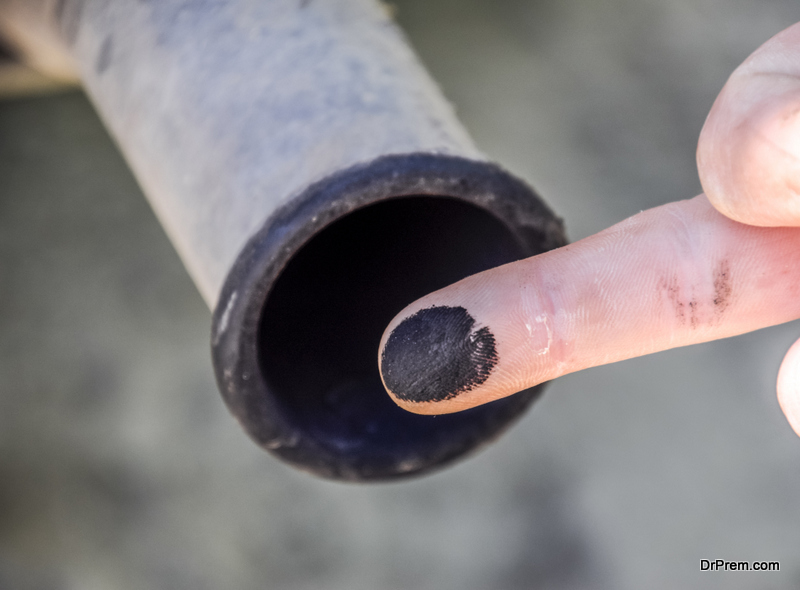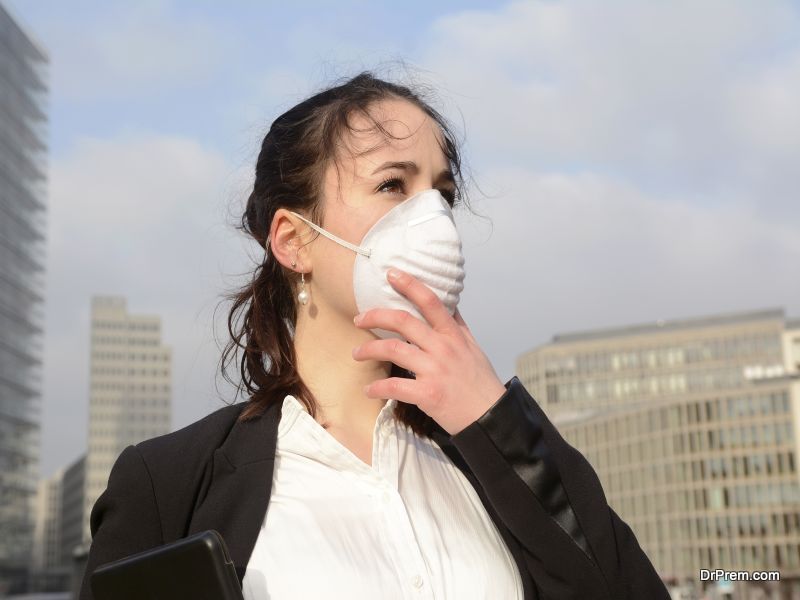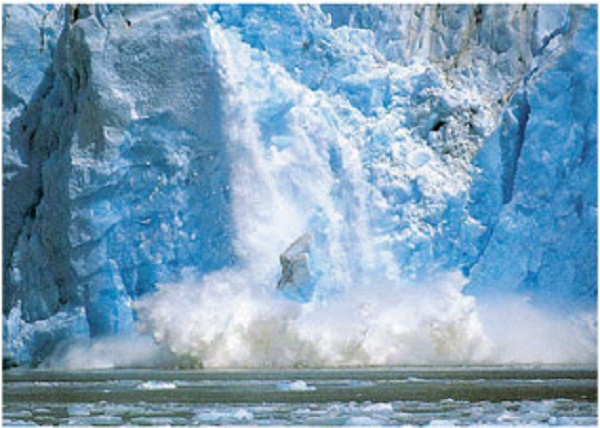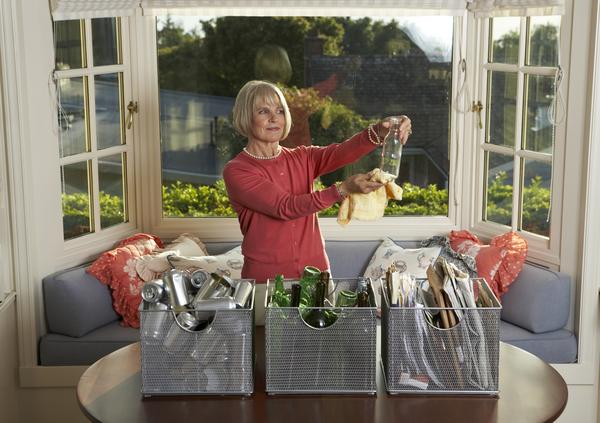We have heard of recycling glass, metal, plastic and paper, but recycling air pollution too is now possible with the creative ideas of a few people. They have used the latest technology to turn the air pollution into useful things, including art. These ingenious ideas together with latest technology can curb air pollution and have the potential to clean the skies, and give us healthy air to breathe. Read on to find out the most exciting developments in reducing, recycling and reusing polluted air:
Creative ways to recycling air pollution
Smog is a major problem in overpopulated metros of the world such as New Delhi, Beijing, Los Angeles etc. A few creative geniuses have discovered innovative ways to reuse smog into amazing items, such as bricks, ink and jewelry.
A Chinese artist made international headlines when he went around ‘collecting’ polluted air with a vacuum cleaner and turned this collected polluted air into a smog ‘brick’. His method is certainly one of the unique ways for recycling air pollution. At that time, Beijing was experiencing haze for about three days at a time. The artist, who is better known as ‘Nut Brother’ vacuumed 100 grams or more of fine particles from the atmosphere, mixed it with clay and created a brick. Though it was just an idea to create awareness about Beijing’s smog problem, it demonstrated that polluted air could be used to make something useful.
Air pollution turned into art
Dutch artist Daan Roosegarde is recycling air pollution to make art. He created a tower of height 23 feet, which actually works as air purifier. It sucks up the smog and releases clean air back into the atmosphere. The fine particles which are ‘sucked up’ are transformed into gemstones and used to make fashionable rings. Each ring stands for 1,000 cubic meter of cleaned air.
Recycling air pollution in this and similar methods may give rise to more examples of recycling air pollution to make art. Maybe, diamonds in the future will not be dug out from the earth, but created from the polluted air around us!
Creating ink out of soot
 Anirudh Sharma, innovator and MIT graduate has developed an amazing idea for recycling air pollution. He has found a way how to make air ink i.e. making printer ink from the black soot particles floating in the air. He has developed a method to harvest the black smoke you see billowing out from car mufflers and chimneys and reuse it to make black ink.
Anirudh Sharma, innovator and MIT graduate has developed an amazing idea for recycling air pollution. He has found a way how to make air ink i.e. making printer ink from the black soot particles floating in the air. He has developed a method to harvest the black smoke you see billowing out from car mufflers and chimneys and reuse it to make black ink.
The pigmentation or the color black of the black smoke is unburned carbon, which is usually released due to incomplete combustion. He realized that if the carbon from the air is collected and treated, it can make good quality raw material used in ink and printing industries. The powdery black substance is extracted after impurities and carcinogens are removed. Then it is mixed with some oil and alcohol to give rise to ‘black gold’.
This could be a cheap alternative to replace traditional ink and a wonderful way for recycling air pollution. Innovative ideas to reduce air pollution such as this one could spell relief for millions of people worldwide, who suffer from respiratory problems due to inhalation of the pollution particles of the air.
The Eureka moment
Anirudh Sharma, while attending a conference, saw black particles accumulate on his bright, white shirt. The tiny specks were settling on the shirt from the pollution in the air around him. This is when he had his ‘Eureka’ moment – the moment when brilliant inspiration struck him. He realized that these black particles could be used as a coloring pigment/agent. He was in India at the time of his discovery.
He went back to MIT and started working on his idea of transforming carbon pollution to ink. He used simple candle soot to devise his prototype. After completing his masters, he came back to India and founded the Graviky Labs in 2016.
About Graviky labs
 Sharma created a team to focus how to make air ink. Everyone on the initial team belonged to Delhi, which was significant because they understood the effect of pollution on health. Delhi is one of India’s most polluted cities, due to the huge number of vehicles and factories it has.
Sharma created a team to focus how to make air ink. Everyone on the initial team belonged to Delhi, which was significant because they understood the effect of pollution on health. Delhi is one of India’s most polluted cities, due to the huge number of vehicles and factories it has.
The team developed an instrument which could be fitted on the exhaust pipes of cars and portable generators. This device would collect the soot that was a result of burning diesel. The Graviky team mixed the black powder with different solvents. The resulting solution was filled into markers and bottles. The team has made about 1,000 liters or 264 gallons of Air-Ink over the period of one year. According to the company, 30 milliliters of ink uses 45 minutes of tailpipe exhaust. Graviky is finding ways to reduce the cost of the ink, thus making it suitable for screen printing too. Till now, 75 devices have been used and smaller devices are being worked on, which could be attached to hundreds of trucks. The co-founder Nitin Kaushik visualizes ‘carbon banks’ where drivers could drop off the carbon emitted by the trucks.
The ink known as ‘Air-Ink’ has a double benefit. It not only extracts harmful fine particles from the air, but also reduces the manufacturing of carbon black.
Graviky got a huge response from Kickstarter, which brought them $41,000 in funds. They have also been sponsored by private company and now, the Graviky has already begun distributing their product. Artists are their main buyers, who have used Air-Ink to produce beautiful artworks in Singapore, London as well as other cities.
How effective is Air-Ink
Many had their doubts about Air-Ink and thought it was just a gimmick. Kristopher Ho is a Hong Kong based artist who was initially skeptical of the ink, but became a fan after using the markers. The Graviky markers happen to be thicker than regular ink, which the artist found to be perfect for his painting needs.
Another artist using the Air-Ink is Nepalese artist Sneha Shrestha, who uses it for ‘handstyles’.
Governments and private investors should support companies like Graviky who are working on innovative ideas to reduce air pollution. Creating ink out of pollution seems to be commercially viable and beneficial for the environment and people, and has great potential to clean up the atmosphere.





